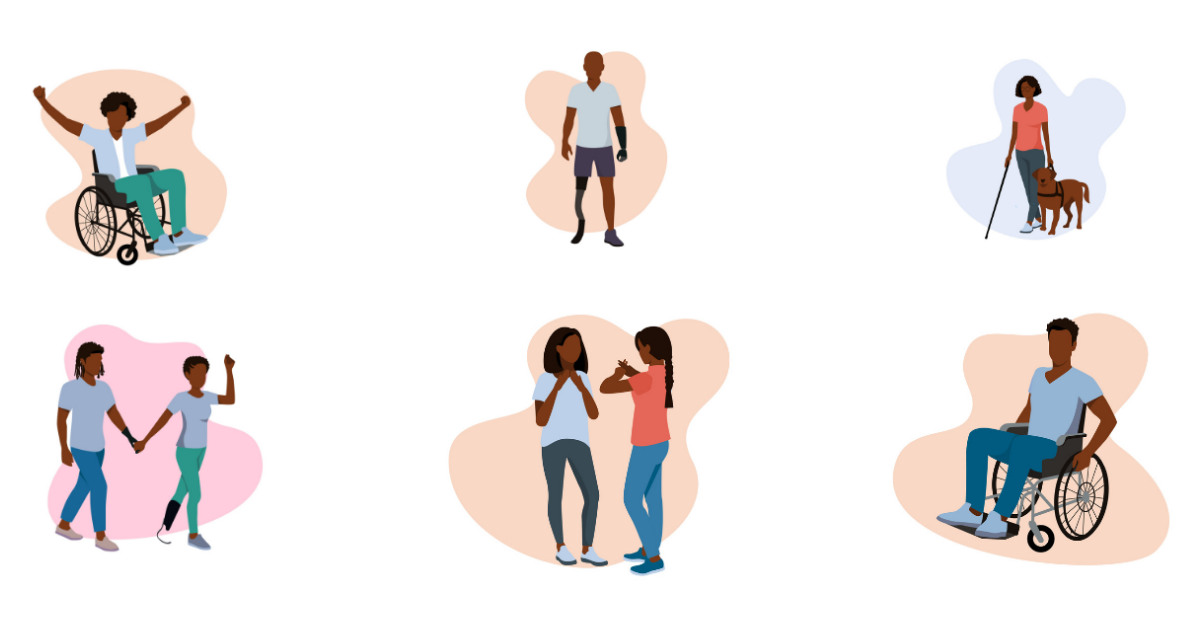I recently spoke to Zakiya Mabery, founder of B. Global Diversity & Inclusion Strategic Planning, to spark an action-oriented conversation in philanthropy about including the needs and voices of the disability community in efforts to combat systemic racism.

Vilissa Thompson
As I sought out the voices of people of color doing this work, a trend started to emerge: A vast majority of the people most visibly working on disability justice are contracted consultants.
One such consultant is Vilissa Thompson, LMSW. A macro social worker, disability rights consultant and founder of Ramp Your Voice, Thompson has worked on disability rights issues for about 7 years without grant support.
Thompson said this was an intentional decision because there are many regulations and rules governing nonprofits, as well as burdensome processes to acquire philanthropic resources.
She believes the nonprofit path isn’t as appropriate for her work; incorporating as an LLC gives her more independence and does not come with the constant struggle to fundraise from grantmakers and other donors as a Black disabled woman.
NCRP and Grantmakers for Southern Progress’s As the South Grows (ATSG) project documented similar challenges for local civil rights groups across the South that did not fit into traditional structures of what funders think indicates capability for success.
Much like society’s historical view of disability is that those with them are prevented from succeeding, funders relied on outdated assumptions when determining which groups to fund.
“Foundations and donors disregard … leaders because these individuals seem to lack the educational credentials or formal capacity that grantmakers expect from experienced nonprofit executives,” our ATSG research found.
However, “the capacity to effectively relate to, persuade and represent communities is more important than the capacity to write a grant proposal or speak a funder’s language.”
The structure of how Thompson gets paid doesn’t impact the professional joy that she gets from the work. For her, working with the Movement for Black Lives — a nonprofit-based movement — as an accessibility consultant for virtual events has been a positive experience.
“It’s been really good to encounter an entity that is intentional about centering disability justice and the experiences of Black disabled folks,” Thompson said. “That’s been a surprisingly good experience.”
Over the years, Vilissa has witnessed an increase in interest from organizations and activists to center the disability experience, particularly those of multiply marginalized disabled people.
Of course, while the people with lived experiences will always be doing the work, it will be telling who continues to focus on disability justice after the current racial justice reckoning dies down.
Unfortunately, our country tends to have a short attention span when it comes to marginalized communities.
When the COVID-19 pandemic first hit, how states would meet special education requirements under the Individuals with Disabilities Education Act (IDEA) was a hot topic even outside of the disability community.
There was a flurry of national mainstream media attention in March and April when U.S. Department of Education Secretary Betsy DeVos was expected to make recommendations on IDEA waivers to Congress.
However, after she released the recommendations, the issue, which affects children of all ages, was relegated to the local news and specialized publications about disability rights.
“It’s time to put your money where your mouth is,” Thompson declared. “Philanthropy needs to listen to the folks with lived experiences to see how they can support the work and not just maintain the status quo.”
Adam Fishbein is NCRP’s membership intern.
Have you considered how your foundation is centering Black disabled lives in your grantmaking? Have you asked your grantees how they’re including people of color with disabilities in their work and provided resources for them to do so? Look out for the third and final installment of NCRP’s blog series on disability justice, which will include recommended actions philanthropy can take to better fund the disability rights movement.

